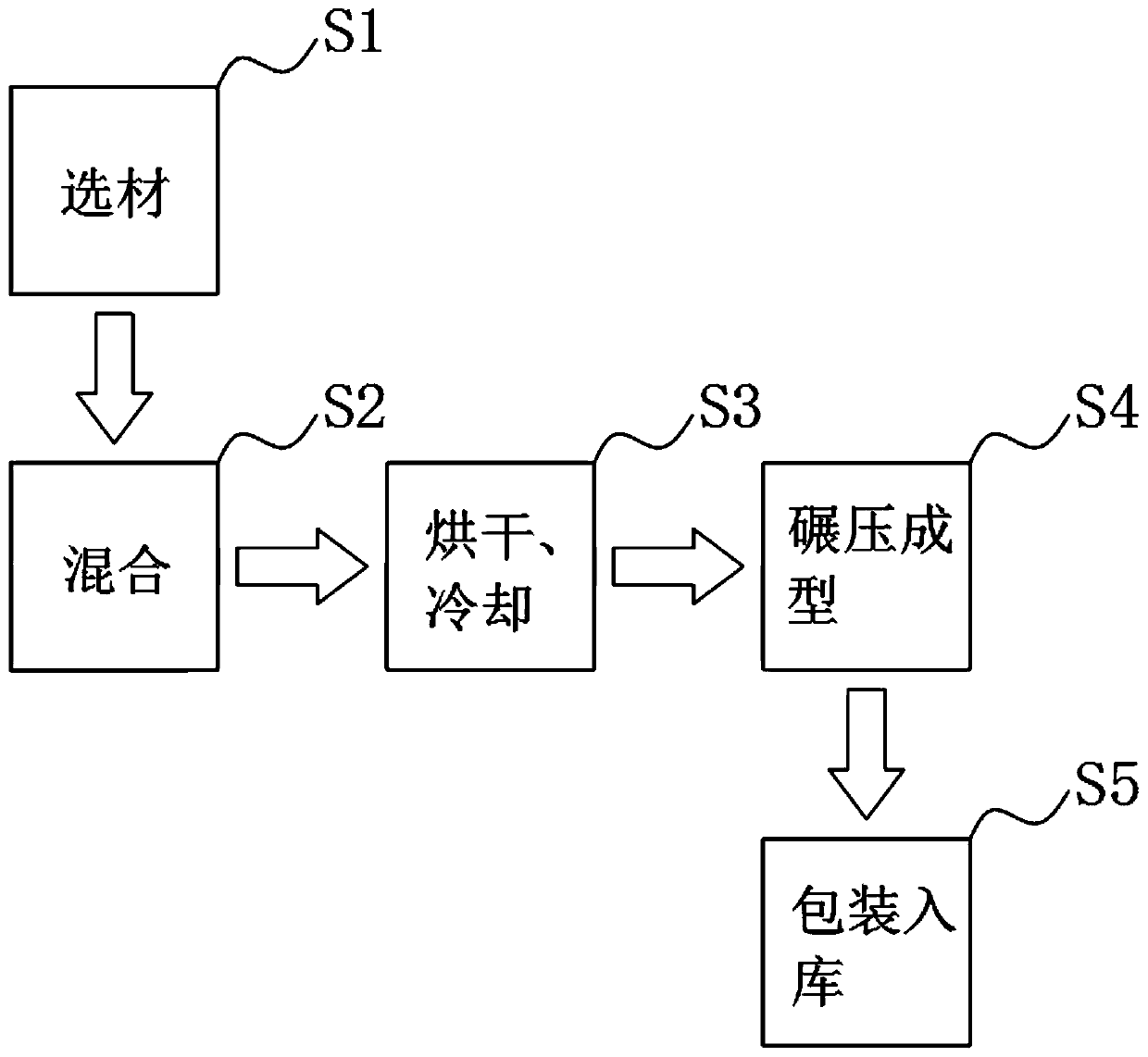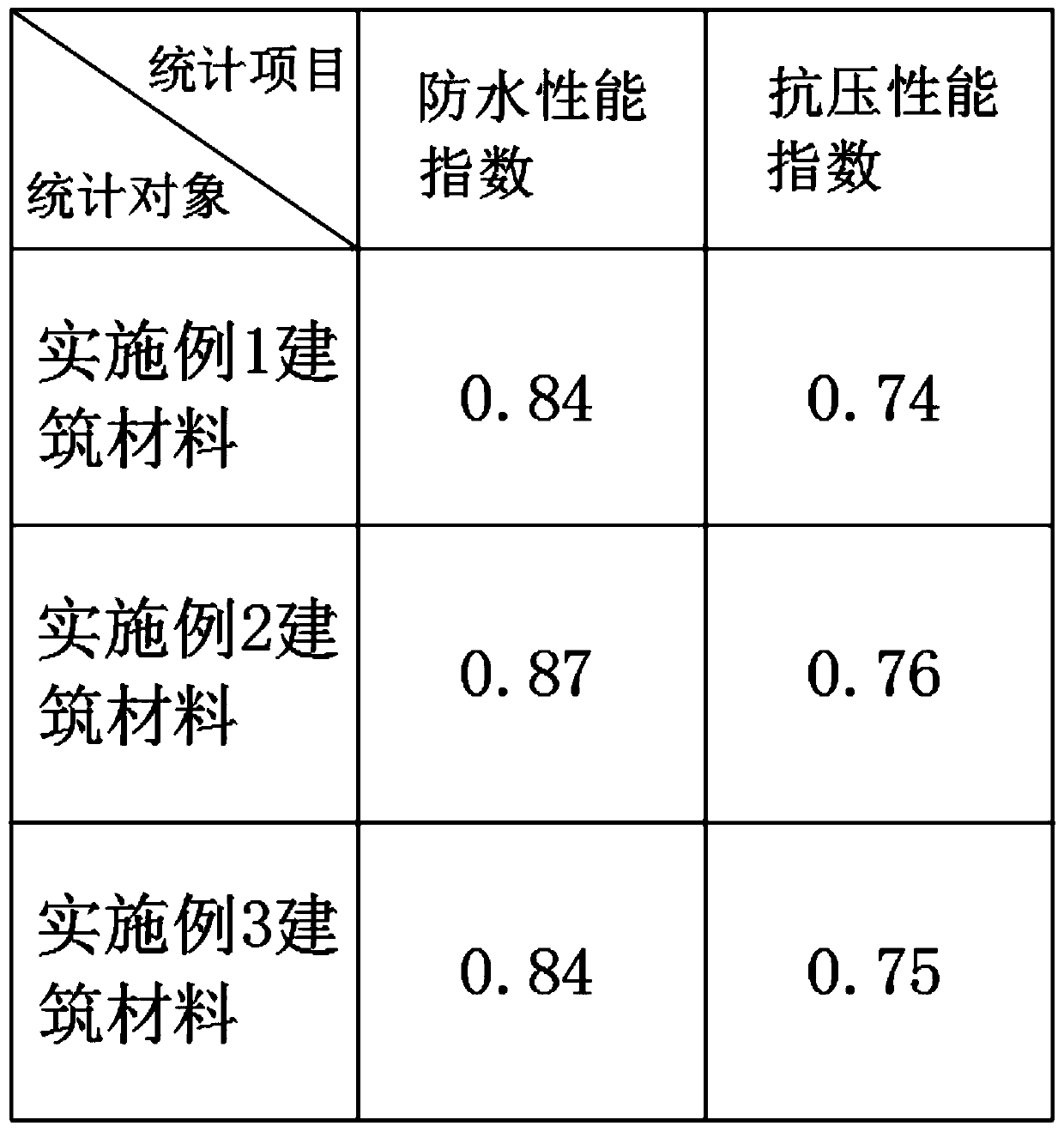Building environment-friendly waterproof material manufacturing process
A waterproof material and manufacturing process technology, applied in the field of building material production process, can solve the problems of poor environmental performance, non-environmental protection, surface damage, etc., achieve the effect of light odor, improve environmental performance, and reduce pollution
- Summary
- Abstract
- Description
- Claims
- Application Information
AI Technical Summary
Problems solved by technology
Method used
Image
Examples
Embodiment 1
[0028] S1, material selection: select 50 parts of acrylic acid, 70 parts of epoxy resin glue, 5 parts of aluminum oxide, 8 parts of sodium silicate, 10 parts of talcum powder, 11 parts of hollow glass microspheres, 10 parts of pigment, and 80 parts of organic solvent for standby;
[0029] S2. Mixing: Pour the organic solvent into the reaction kettle, then pour the acrylic acid and epoxy resin glue into the reaction kettle to dissolve in the organic solvent. At this time, the temperature in the reaction kettle is raised to 200°C by the heating device, and then add Alumina, sodium silicate, talcum powder, hollow glass microspheres and pigments are stirred and mixed by a stirring mechanism to form a mixed liquid;
[0030] S3. Drying and cooling: Take out the mixed liquid in S2, start the drying device to dry the mixed liquid, control the drying temperature at 100°C for 2.5 hours, wait for it to dry, and then close the drying device. Wait for natural cooling, the time is 1.5h;
...
Embodiment 2
[0038] S1. Material selection: select 55 parts of acrylic acid, 75 parts of epoxy resin glue, 6 parts of aluminum oxide, 9 parts of sodium silicate, 11 parts of talcum powder, 12 parts of hollow glass microspheres, 11 parts of pigment, and 90 parts of organic solvent for standby;
[0039] S2. Mixing: Pour the organic solvent into the reaction kettle, then pour the acrylic acid and epoxy resin glue into the reaction kettle to dissolve in the organic solvent. At this time, the temperature in the reaction kettle is raised to 200°C by the heating device, and then add Alumina, sodium silicate, talcum powder, hollow glass microspheres and pigments are stirred and mixed by a stirring mechanism to form a mixed liquid;
[0040] S3. Drying and cooling: Take out the mixed liquid in S2, start the drying device to dry the mixed liquid, control the drying temperature at 115°C, and the drying time is 3.0h, wait for it to dry, then close the drying device, Wait for natural cooling, the time i...
Embodiment 3
[0048] S1. Material selection: select 60 parts of acrylic acid, 80 parts of epoxy resin glue, 7 parts of aluminum oxide, 10 parts of sodium silicate, 12 parts of talcum powder, 13 parts of hollow glass microspheres, 12 parts of pigment, and 100 parts of organic solvent for standby;
[0049] S2. Mixing: Pour the organic solvent into the reaction kettle, then pour the acrylic acid and epoxy resin glue into the reaction kettle to dissolve in the organic solvent. At this time, the temperature in the reaction kettle is raised to 200°C by the heating device, and then add Alumina, sodium silicate, talcum powder, hollow glass microspheres and pigments are stirred and mixed by a stirring mechanism to form a mixed liquid;
[0050] S3. Drying and cooling: Take out the mixed liquid in S2, start the drying device to dry the mixed liquid, control the drying temperature at 130°C for 3.5 hours, wait for it to dry, and then close the drying device. Wait for natural cooling, the time is 2.5h; ...
PUM
 Login to view more
Login to view more Abstract
Description
Claims
Application Information
 Login to view more
Login to view more - R&D Engineer
- R&D Manager
- IP Professional
- Industry Leading Data Capabilities
- Powerful AI technology
- Patent DNA Extraction
Browse by: Latest US Patents, China's latest patents, Technical Efficacy Thesaurus, Application Domain, Technology Topic.
© 2024 PatSnap. All rights reserved.Legal|Privacy policy|Modern Slavery Act Transparency Statement|Sitemap



